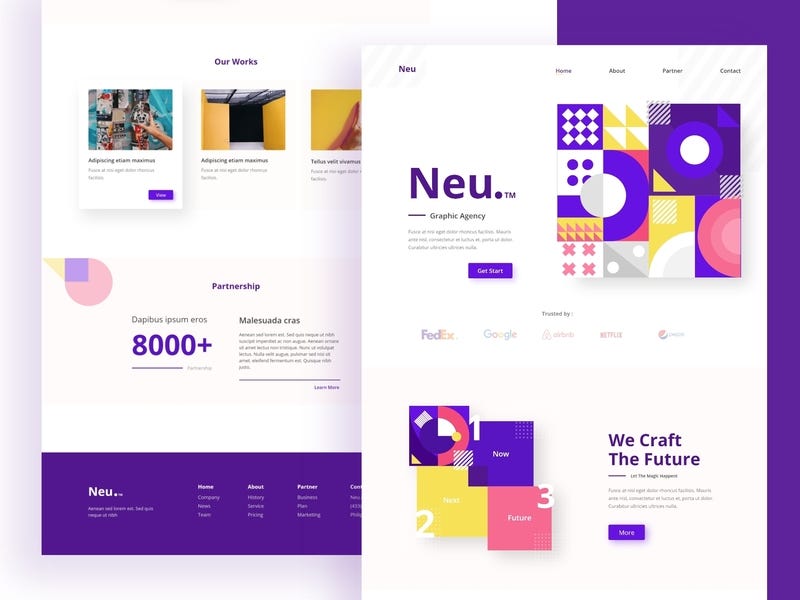
Website design can often seem challenging. But it is not as difficult as you may think, and this will become more obvious the more that you educate yourself. You will be well on your way to putting together a visually appealing and highly effective website, if you keep the following advice in mind.
Don’t pile on the graphics. Graphics are critical, but they can also clutter up a page. Don’t use graphics just to decorate; use them to improve the site. Having the right graphics improves your site all around.
Check your pages for broken links. Visitors become frustrated easily when they click a link and find that it leads to the wrong place. You can manually check links or use a program that will find broken links for you.
Keep in mind that you shouldn’t overuse JavaScript. It does provide more ways for you to build a responsive and transparent site, but it can be problematic for some visitors. Web browsers are all different, and each comes out with new versions pretty regularly. All visitors won’t have the most current version of the particular browser they’re utilizing. Many people turn off Javascript, or disallow it on a site they don’t visit regularly. These problems will lead to people not being able to use your site.
Buy a program to help you design a great website, there are many available in the marketplace. These programs are user-friendly and will help you create great websites really quick. Let’s face it, a boring, drab site simply drives traffic away and that is not what we want to do.
To make a more attractive website, try using your own pictures. A few pictures on your site can make it more appealing to visitors. When people see pictures they tend to spend more time looking at your site and cannot wait to click on the next picture.
Anything published on your site needs to be something that you know and understand well. This means that no matter what information you share, do your research. Providing misleading information to your consumers will only cause them to leave your site. Having a good blog involves having an education on your subject.
Make sure to check whether your site works on all Internet browsers. Each web browser has a slightly different way of how they illustrate the website, and in a couple of cases these little differences could have major effects on the experience for the user. Using available resources, determine which browsers are the most popular among your target demographic. Test your website on all of these browsers, including the popular mobile web browsers.
Try you best to write an informative and interesting “About Us” page. These pages are often dull and uninteresting. This is an opportunity to make your website stand out. Let your visitors know a little bit about you. Share tidbits of information such as your business goals, your beginnings in web design and the sources of your inspiration.
Keep in mind that the Internet contains a plethora of website design examples. If you need inspiration, browse some of the other websites out there. When you find things you like, think about how you can use those ideas or even improve upon them. You can’t just borrow ideas if you want your site to be a success. Take those ideas and improve them.
Always proofread everything that you publish on your website. People should respect your company. While you may not think errors are a big deal, many people will view it as unprofessional and will believe that you don’t care enough to get their orders or service correct either.
The majority of people are familiar with Photoshop, and for those who want to succeed with web design, they understand they must learn as much as they can about it. Dreamweaver is less popular but is easier to master and is filled with useful tools designed for webmasters.
Try to include some “site searching” on your index page and sub-pages if you can. This is absolutely essential for maximizing the site’s usability, and creates easy access to whatever information the viewer is seeking. The time and effort required to set up a site search capability are practically negligible, especially when weighed against the very significant benefits.
The design of your website should not look anything like other websites selling similar products. It’s easy to check this as all you would have to do is visit your competitor’s website. A website that is too similar won’t stand out. Your website will just seem like a poor imitation of the original, so be sure you don’t accidentally create a plagiarized website!
Try to manage your time wisely when you are designing your website. Due to the fact that building a website entails completing a large amount of smaller tasks, you may feel like you can work on things another time. If you are not careful, all these tasks can pile up and overwhelm you. Take care of tasks when they pop up.
Don’t assume that the design process has wrapped up just because the site is live. Always update your site and remain active to maximize your results. Daily updates aren’t necessary, but you should update your site regularly, at least a few days a week. This is important if you have content that includes videos, a podcast or articles. Updating a site is different than updating your blog. You may need to implement a more diligent regime to be successful.
Leaving white space for your users is a well-reviewed element of design. It makes your site easier to read, and your content easier to remember.
Web Design
You should now see that web design isn’t a mystery. As your learn more about web design, creating a website will not seem so difficult. Use the tips you’ve read here to get your site ready to go.